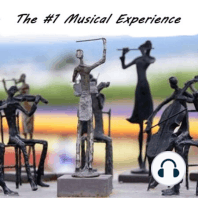33 min listen

Violin Concerto in B Minor, Op. 61: I. Allegro Yehudi Menuhin/London Symphony Orchestra
Violin Concerto in B Minor, Op. 61: I. Allegro Yehudi Menuhin/London Symphony Orchestra
ratings:
Length:
50 minutes
Released:
Apr 27, 2021
Format:
Podcast episode
Description
Why We Should Expose Our Kids To Classical Music https://ourtownlive.net #herbw79Yehudi Menuhin was born in New York City to a family of Lithuanian Jews. Through his father Moshe, he was descended from a distinguished rabbinical dynasty.[1] In late 1919, Moshe and his wife Marutha (née Sher) became American citizens, and changed the family name from Mnuchin to Menuhin.[2] Menuhin's sisters were concert pianist and human rights activist Hephzibah, and pianist, painter and poet Yaltah.Menuhin's first violin instruction was at age four by Sigmund Anker (1891–1958); his parents had wanted Louis Persinger to teach him, but Persinger refused. Menuhin displayed exceptional musical talent at an early age. His first public appearance, when he was seven years old, was as solo violinist with the San Francisco Symphony Orchestra in 1923. Persinger then agreed to teach him and accompanied him on the piano for his first few solo recordings in 1928–29. Get bonus content on Patreon Hosted on Acast. See acast.com/privacy for more information.
Released:
Apr 27, 2021
Format:
Podcast episode
Titles in the series (100)
Edvard Grieg - Peer Gynt Suites 1 & 2 (1888-91): Why We Should Expose Our Kids To Classical Music https://ourtownlive.net #herbw79Grieg (1843-1907) was one of the definitive leaders of Scandinavian music and his influence was great. Although composing many short piano pieces and chamber works,... by The #1 Musical Experience